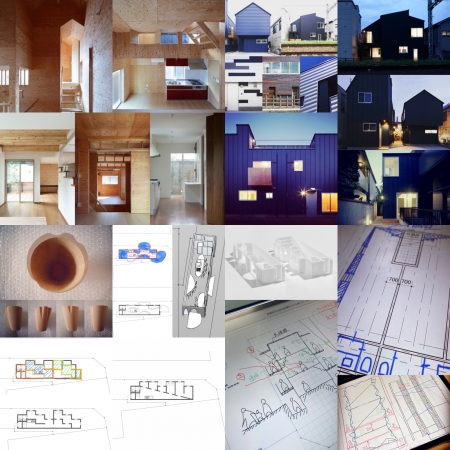新しいとは
今までに見たことが無いような仕上げにしようと考えた時に、コストとの兼ね合いもあるが、それの良し悪し、受け入れられるかどうかなどを考えなければ、案外今までに見たことが無いような仕上げにすることは簡単である。
さらに設計者が考えれば、その建築に対して的外れなことをする可能性は少ないだろう。実現するとなればコストはクリア、良し悪しは精度を上げるしかない。
あとは違和感との兼ね合いだけになる。何か新しいことをしようとすれば違和感があるのは当然だと思われるかもしれないが、実は新しいと感じる物を見た時に違和感は全く無い。むしろ、新しいけれど、それがどのように新しいかを説明できる、この説明できるということがそれまでの既成の延長で考えることができるからで、それができない時に違和感が生じる。
だから、逆にいうと違和感を感じる時、人はそれに対して新しいとは考えない、ではなんと、奇抜と考える。違和感をたくさん生めば奇抜になる。違和感は生むより無くす方が難しいし、新しい。
"What is new"
When I think about finishing it like I've never seen before, there is a trade-off with cost, but if I don't think about whether it's good or bad and whether it's acceptable or not, I've never seen it before. It is easy to make such a finish.
Moreover, if the designer thinks, it is unlikely that he will do anything wrong with the architecture. If it is realized, the cost will be cleared, and the quality will have to be improved.
The only thing left is to balance the feeling of strangeness. It may seem natural that you feel uncomfortable when you try to do something new, but in reality, when you see something that feels new, you don't feel any discomfort at all. Rather, it is new, but it can explain how it is new, because this explanation can be thought of as an extension of the existing ones, and when that is not possible, a sense of discomfort arises.
So, conversely, when you feel something is wrong, people don't think it's new, but it's strange. If you create a lot of discomfort, you will be eccentric. It's harder to get rid of the discomfort than it is, and it's new.


